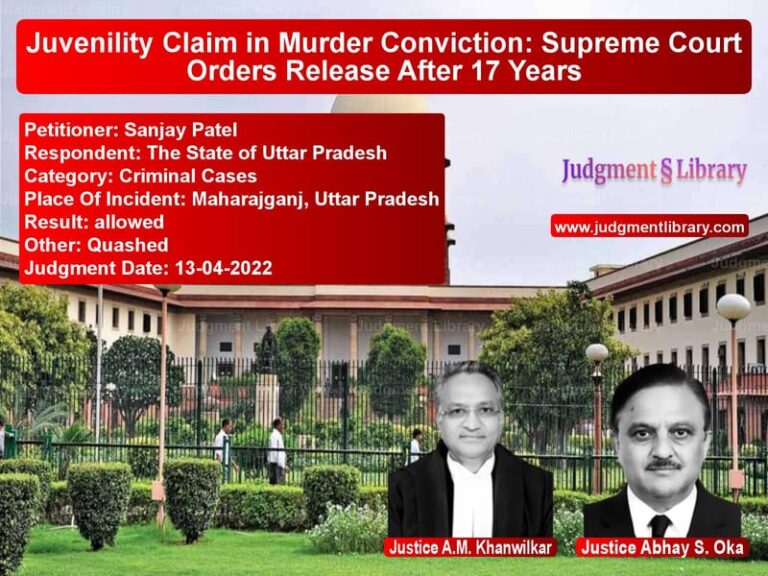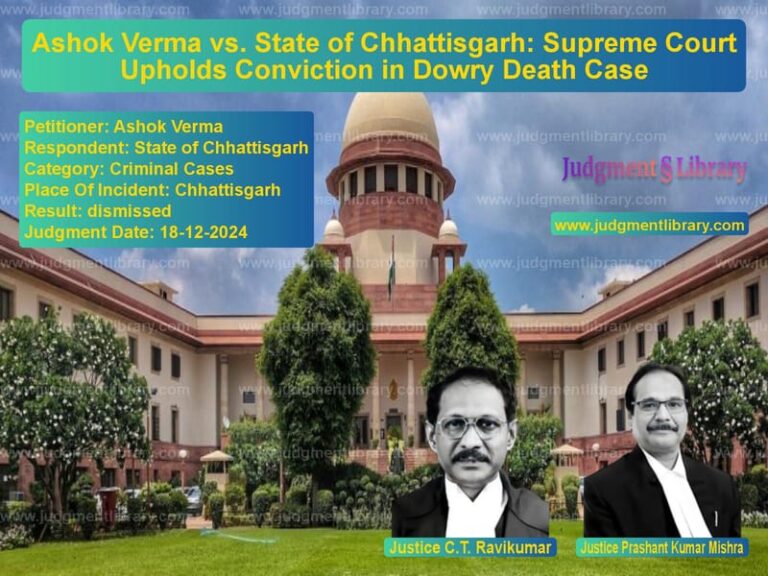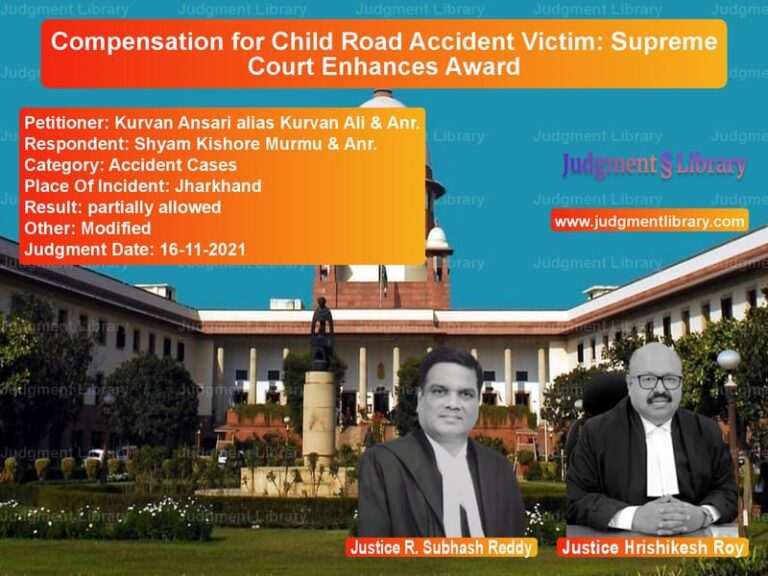Supreme Court Upholds Death Penalty for Heinous Crime Against Minor
The case of Vasanta Sampat Dupare vs. State of Maharashtra is a landmark judgment where the Supreme Court reaffirmed the death penalty for the brutal rape and murder of a four-year-old girl. This case highlights the application of the ‘rarest of rare’ doctrine in sentencing and reflects the judiciary’s firm stance on crimes involving extreme brutality against children.
Background of the Case
Vasanta Sampat Dupare was convicted for kidnapping, rape, and murder under Sections 302, 363, 367, 376(2)(f), and 201 of the Indian Penal Code. The trial court sentenced him to death for murder and life imprisonment for rape. His conviction was upheld by the High Court, and he filed a review petition before the Supreme Court.
The prosecution proved that on the day of the incident, the accused lured the minor girl with chocolates, took her away on his bicycle, and later sexually assaulted and murdered her by crushing her skull with heavy stones.
Legal Arguments
Petitioner’s (Vasanta Sampat Dupare) Arguments
- The defense argued that the circumstantial evidence was not sufficient to establish his guilt beyond a reasonable doubt.
- They contended that the crime did not fall within the ‘rarest of rare’ category, and the death penalty was excessive.
- Mitigating factors, such as his good conduct in jail, participation in educational programs, and lack of prior criminal history, were presented.
- The petitioner also submitted that he had completed a Bachelors Preparatory Program and passed an examination on Gandhian Thoughts, proving his willingness to reform.
Respondent’s (State of Maharashtra’s) Arguments
- The prosecution highlighted the barbaric nature of the crime, arguing that the case met all conditions for the imposition of the death penalty.
- They presented eyewitness accounts, forensic evidence, and medical reports that established his guilt beyond doubt.
- The prosecution argued that the accused had not shown any remorse, proving he remained a threat to society.
- The forensic reports confirmed the presence of the victim’s blood on the accused’s clothes, and the medical reports corroborated sexual assault and fatal head injuries.
Key Observations of the Supreme Court
Findings on Guilt
The Supreme Court found that the prosecution had proven the following:
- Multiple witnesses saw the accused taking the victim away.
- The accused’s disclosure statement led to the discovery of the dead body and the location where he wiped his blood-stained clothes.
- The forensic and medical reports confirmed the victim had suffered violent sexual assault and fatal injuries caused by heavy stones.
Rationale for the Death Penalty
The Court referred to the legal principles established in Bachan Singh vs. State of Punjab and Machhi Singh vs. State of Punjab, which define the ‘rarest of rare’ doctrine.
The Court considered:
- The victim was a helpless four-year-old child.
- The crime was committed with extreme brutality and depravity.
- The accused lured the child under the guise of friendship, violating her trust.
- The accused crushed her skull to ensure she would not survive.
- There was no sign of remorse from the accused.
- The crime had shocked the collective conscience of society.
The Supreme Court stated:
“The injuries caused on the minor girl are likely to send a chill in the spine of the society and shiver in the marrows of human conscience. The crime was diabolical, barbaric, and inhuman, warranting the severest punishment.”
Judgment and Final Verdict
The Supreme Court dismissed the review petition and upheld the death sentence:
“The extreme depravity and barbaric manner in which the crime was committed, and the fact that the victim was a helpless girl of four years, clearly outweigh the mitigating circumstances now brought on record. We, therefore, affirm the view taken in the Judgment under review and dismiss the present Review Petitions.”
Significance of the Judgment
This ruling reinforces the judiciary’s commitment to delivering justice in cases of extreme brutality against minors. Key takeaways:
- The judgment reaffirms the ‘rarest of rare’ doctrine in awarding the death penalty.
- It highlights the importance of forensic and medical evidence in criminal convictions.
- The verdict sends a strong message about zero tolerance for crimes against children.
- It demonstrates that reformation cannot always override justice, especially in cases involving unforgivable cruelty.
Ultimately, this case serves as a benchmark for how the judiciary handles heinous crimes against children and upholds the death penalty in the most egregious cases.
Don’t miss out on the full details! Download the complete judgment in PDF format below and gain valuable insights instantly!
Download Judgment: Vasanta Sampat Dupar vs State of Maharashtra Supreme Court of India Judgment Dated 03-05-2017.pdf
Direct Downlaod Judgment: Direct downlaod this Judgment
See all petitions in Murder Cases
See all petitions in Rape Cases
See all petitions in Judgment by Dipak Misra
See all petitions in Judgment by Rohinton Fali Nariman
See all petitions in Judgment by Uday Umesh Lalit
See all petitions in dismissed
See all petitions in supreme court of India judgments May 2017
See all petitions in 2017 judgments
See all posts in Criminal Cases Category
See all allowed petitions in Criminal Cases Category
See all Dismissed petitions in Criminal Cases Category
See all partially allowed petitions in Criminal Cases Category







